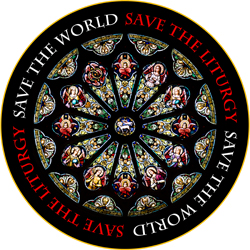Earliest Known Polyphony Discovered
h/t to Fr Z
The earliest known practical example of polyphonic music .... has been found in a British Library manuscript in London.
The inscription is believed to date back to the start of the 10th century and is the setting of a short chant dedicated to Boniface, patron Saint of Germany. It is the earliest practical example of a piece of polyphonic music ...
Written using an early form of notation that predates the invention of the stave, it was inked into the space at the end of a manuscript of the Life of Bishop Maternianus of Reims.
The piece was discovered by Giovanni Varelli, a PhD student from St John's College, University of Cambridge, while he was working on an internship at the British Library. He discovered the manuscript by chance, and was struck by the unusual form of the notation. Varelli specialises in early musical notation, and realised that it consisted of two vocal parts, each complementing the other.
... Treatises which lay out the theoretical basis for music with two independent vocal parts survive from the early Middle Ages, but until now the earliest known examples of a practical piece written specifically for more than one voice came from a collection known as The Winchester Troper, which dates back to the year 1000.
Varelli's research suggests that the author of the newly-found piece – a short "antiphon" with a second voice providing a vocal accompaniment – was writing around the year 900."
Typically, polyphonic music is seen as having developed from a set of fixed rules and almost mechanical practice. This changes how we understand that development precisely because whoever wrote it was breaking those rules. It shows that music at this time was in a state of flux and development, the conventions were less rules to be followed, than a starting point from which one might explore new compositional paths."




No comments:
Post a Comment